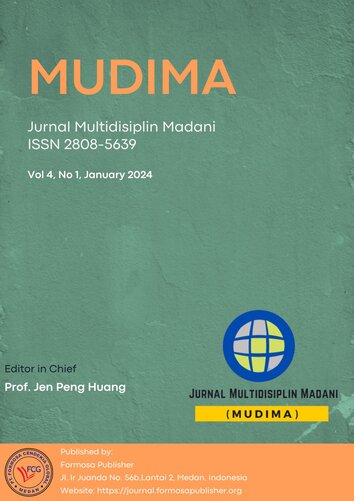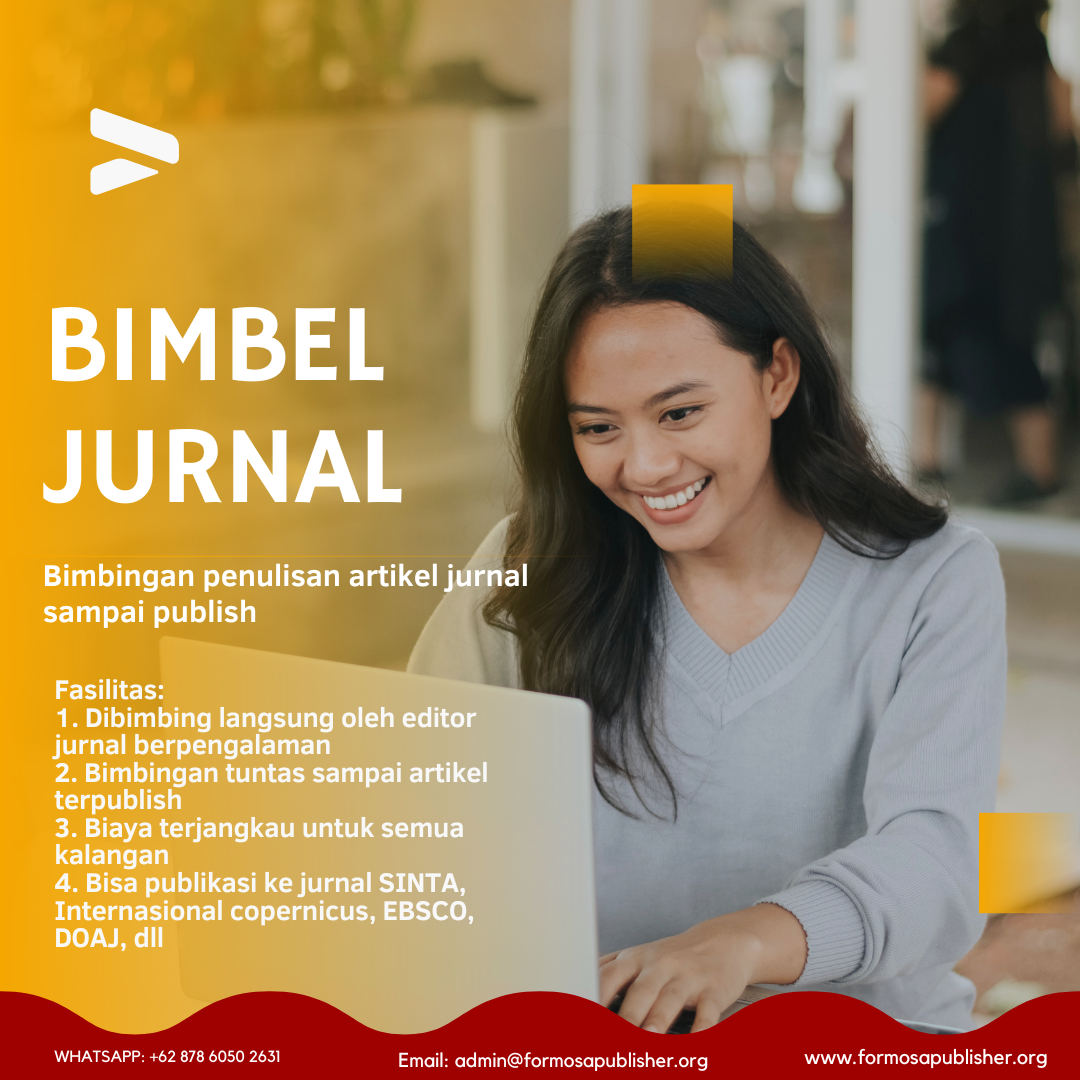An Analysis of the Effectiveness of Zakat, Infaq and Sadaqah Fund Management in a Large Mosque in Taipei
DOI:
https://doi.org/10.55927/mudima.v4i1.7501Keywords:
Philanthropic Funds, the Effectiveness of Zakat Management, Infaq, SadaqahAbstract
Taiwan is a country with a religious composition dominated by adherents of Buddhism, Taoist beliefs, Christianity, and practices of animism or other local beliefs, while adherents of Islam are 0.3% of the total population. The purpose of this study was to analyze the management of zakat infaq and alms funds at the Taipei Grand Mosque, as well as to analyze the effectiveness of the management of zakat infak and alms funds. The research results prove that managing zakat funds, both fundraising and channeling funds for the Taipei Grand Mosque, does not carry out planning and coordination. Mosque management in collecting funds and distributing them is only passive waiting for muzaki to come to the mosque to pay zakat, infaq, and alms. Fundraising is done by opening an account at a bank and a charity box in front of the mosque. Muslim communities who are going to pay zakat, can do it by bank transfer or come directly to the mosque by handing over money in cash or putting it through a charity box. The distribution of zakat funds can also be carried out by transferring funds to a bank and distributing them in cash at the Taipei Great Mosque. Funds are distributed mainly to mustahik who are around the mosque. The distribution of zakat funds is carried out transparently, regardless of nationality, ethnicity, or race, as long as the Muslim Community is included in the eight a snap. Supervision or monitoring of fundraising is carried out by the internal management of the mosque, both routinely and specifically. The government conducts audits of incoming and outgoing funds so that every mosque in Taipei is required to submit financial reports to the government
References
Achmad, N. (2022). Peradaban Pengelolaan Zakat di Dunia dan Sejarah Zakat di Indonesia. Iqtisad: Reconstruction of Justice and Welfare for Indonesia, 9(2), 119. https://doi.org/10.31942/iq.v9i2.7271
Afif, M. (2020). Fungsi masjid dalam mengelola dana ziswah sebagai instrumen pemberdayaan ekonomi umat. 03(02), 749–772.
Afifah, Z. (2022). Revitalisasi Masjid Melalui Manajemen Sumber Daya Masjid Sebagai Penggerak Ekonomi Masyarakat dan UMKM. 8(2), 8–16.
Akbar, T., & Siti-Nabiha, A. K. (2022). Objectives and measures of performance of Islamic microfinance banks in Indonesia: the stakeholders’ perspectives. ISRA International Journal of Islamic Finance, 14(2), 124–140. https://doi.org/10.1108/IJIF-11-2020-0231
Amiruddin, K. (n.d.). Model-model pengelolaan zakat di dunia muslim.
Dewan Nasional Zakat Republik Indonesia (BAZNAS) dan Bank Sentral Republik Indonesia. (2014). Menuju Pendirian Sistem Zakat yang Efisien dan Sehat.
Hani, U. (2015). Analisis tentang Penyamarataan Pembagian Zakat Kepada Asnaf Zakat Menurut Pendapat Imam Syafi’I. ISSN, II.
Hardani dkk. (2020). Metode Penelitian kualiatatif dan kuantitatif (A. Husnu Abadi, A.Md. (ed.); Edisi 1). Pustaka Ilmu.
Hessel Nogi, S. (2005). Manajemen Publik. Grasindo.
Irfan, S. B. (2016). Meningkatkan Efektivitas Penyaluran Zakat. Jurnal Ilmiah Ekonomi Islam Republika.
Jurnal, A., & Islam, E. (2019). Analisis Efektifitas Pendayagunaan Zakat Produktif Pada Pemberdayaan Mustahik (Studi Kasus LAZISMu Pusat). AGHNIYA: Jurnal Ekonomi Islam, 1(2). https://doi.org/10.30596/aghniya.v1i2.3191
Karim, H. A. (2020). REVITALISASI MANAJEMEN PENGELOLAAN PERAN DAN FUNGSI MASJID SEBAGAI LEMBAGA KEISLAMAN Hamdi. Jurnal Islamic Education Manajemen, 5(2), 139–150.
Meity Taqdir Qadratillah, et al. (2011). Kamus Bahasa Indonesia untuk Pelajar. Badan Pengembangan dan Pembinaan Bahasa, Kementrian Pendidikan dan Kebudayaan,.
Mittermaier, A. (2021). Non-compassionate care: a view from an Islamic charity organization. Contemporary Islam, 15(2), 139–152. https://doi.org/10.1007/s11562-020-00457-9
Raies, A. (2020). Islamic versus Conventional Fiscal policy: The effect of zakat on education and employment. Academic Journal of Interdisciplinary Studies, 9(1), 27–33. https://doi.org/10.36941/ajis-2020-0003
Ratna Wijayanti Daniar Paramita. (2021). Metode Penelitian Kuantitatif (Edisi 3).
Sakka, A. R., & Qulub, L. (2019). Efektivitas Penerapan Zakat Online terhadap Peningkatan Pembayaran Zakat pada Lembaga Dompet Dhuafa Sulsel. Al-Azhar Journal of Islamic Economics, 1(2), 66–83. https://doi.org/10.37146/ajie.v1i2.21
Sari, N. (2005). Dauru az-Zakah Fi ilaj al-Musykilat al-Iqtisadiyah. Zikrul Media Intelektual.
Sofyani, H. (2018). Pendampingan manajemen dan tata kelola masjid serta lembaga amil zakat infak dan sodaqoh. 2(2).
Sri Noviyanti. (2019). Menyusuri Sejarah Islam di Taiwan lewat Masjid Agung Taipei Artikel ini telah tayang di Kompas.com dengan judul “Menyusuri Sejarah Islam di Taiwan lewat Masjid Agung Taipei”, Klik untuk baca: https://travel.kompas.com/read/2019/12/04/210000827/menyusuri-s. Kompas. https://travel.kompas.com/read/2019/12/04/210000827/menyusuri-sejarah-islam-di-taiwan-lewat-masjid-agung-taipei
Sugiono. (2019). Metode Penelitian Kuantitatif, Kualitatif (p. 207). Alfabeta.
Syed Ismail al-Qudsy, S. H., & Mohamed Hamidi, N. (2022). Mualaf di Malaysia: Isu dan Penyelesaian Pentadbiran oleh Majlis Agama Islam Selangor. Kajian Malaysia, 40(1), 133–155. https://doi.org/10.21315/km2022.40.1.7
Downloads
Published
How to Cite
Issue
Section
License
Copyright (c) 2024 Elinah, Saiful Anwar

This work is licensed under a Creative Commons Attribution 4.0 International License.
































